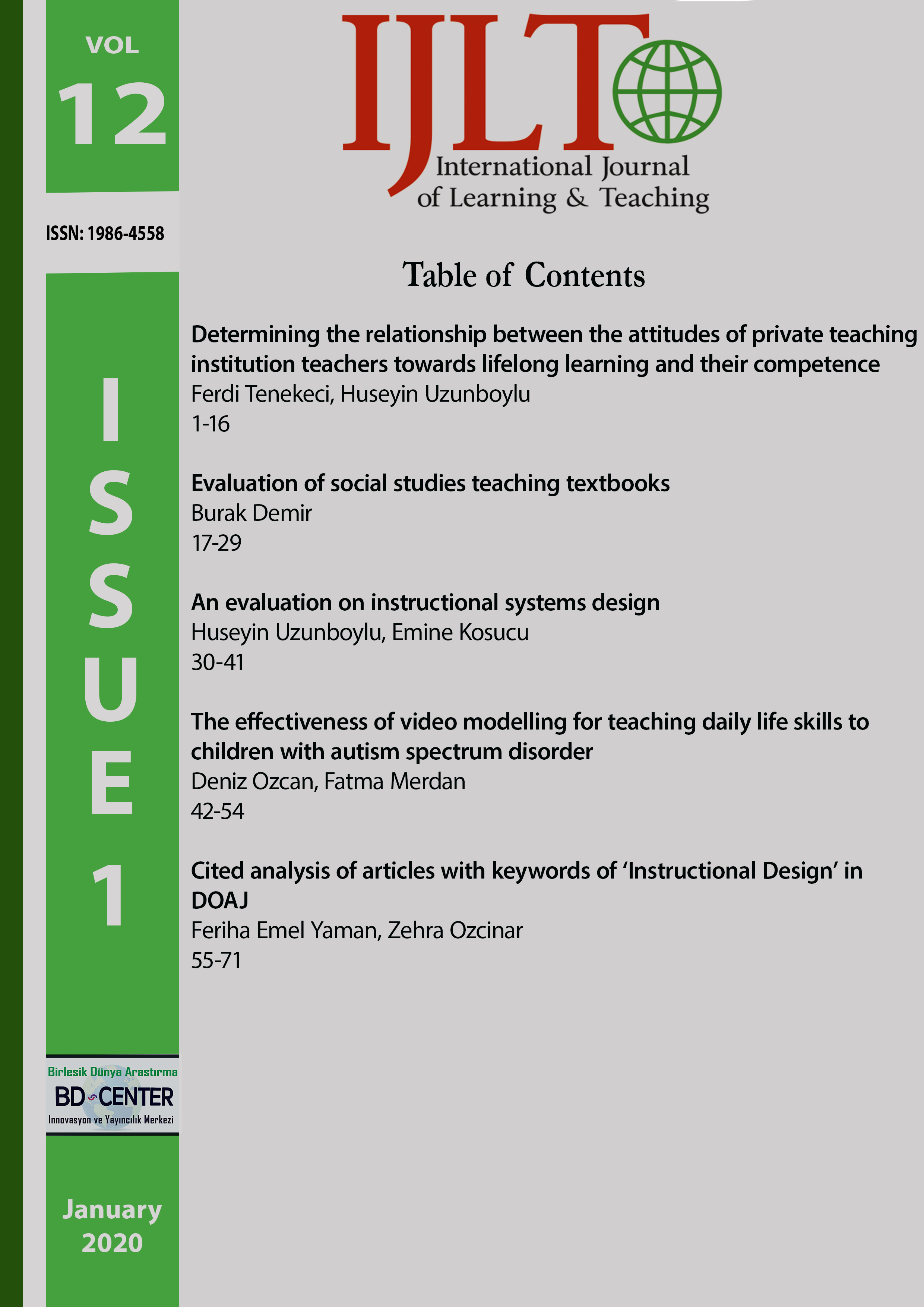An evaluation on instructional systems design
Main Article Content
Abstract
Instructional design and instructional systems design concepts different from the direction of the field lead to confusion as it includes similar use cases from time to time. Instructional design models have different characteristics, and in different areas, in line with the needs of nature according to the purpose of alternating the use of different models, it affects the efficiency. Each model is developed that fixing the underlying spots is the best way to a need for designs designed which varies depending on the model. Some models of the objectives underlying the selection and use of different models have the highest level while improving strategies constitute a more important structure. With this assessment, the instructional design, instructional systems design, systems approach and instructional system design models, by examining the historical development of these models and their distinctive features, will be explained in connection with curriculum development. Thus, referring to the different points of each model and specific model, with respect to instructional systems design, the difference in instructional design, space and design process is studied.
Keywords: Instructional systems design, instructional design, instructional design models.
Downloads
Article Details

This work is licensed under a Creative Commons Attribution 4.0 International License.
Authors who publish with this journal agree to the following terms:
- Authors retain copyright and grant the journal right of first publication with the work simultaneously licensed under a Creative Commons Attribution License that allows others to share the work with an acknowledgement of the work's authorship and initial publication in this journal.
- Authors are able to enter into separate, additional contractual arrangements for the non-exclusive distribution of the journal's published version of the work (e.g., post it to an institutional repository or publish it in a book), with an acknowledgement of its initial publication in this journal.
- Authors are permitted and encouraged to post their work online (e.g., in institutional repositories or on their website) prior to and during the submission process, as it can lead to productive exchanges, as well as earlier and greater citation of published work (SeeThe Effect of Open Access).
